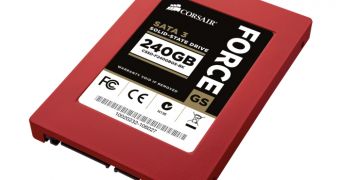The future prospects of the hard drive and solid-state drive markets are still at odds with each other, even though there are plenty of people who think they can coexist just fine.
Even disregarding the biased beliefs of HDD and SSD makers themselves, opinions are divided almost evenly among researchers and analysts.
Some think that HDDs aren't going anywhere and that SSDs will always be relegated to a secondary position. Granted, this view has thawed out in recent years, but it is still there.
On the opposite end of the line there is the group convinced that solid-state drives will completely replace hard drives eventually.
Then there are those who feel magnetic platters and NAND Flash chips can complement each other, through HDD+SSD setups or by merging into hybrid drives.
Today we are seeing the latest “conclusion” drawn by those who expect HDDs to fade away from consumer consciousness.
According to Digitimes Research, SSDs will replace HDDs on the mainstream market in three or five years.
The floods that led to the so-called crisis once again come into play, even though the companies “affected” actually made more money off of it than they lost.
Essentially, hard drives have become too expensive, and even now that tags are sliding down, the process is too slow.
Since SSDs are also becoming more affordable, albeit somewhat more slowly, they soon won't be at a disadvantage in this regard any longer.
During the first half of 2012, average SSD prices fell by half. Right now, HDDs sell for $0.09/GB (0.07 Euro), while SSDs go for $0.80/GB (0.64 Euro). Still a large difference, to be sure, but not as monumental as a couple of years back.
Finally, smartphones, tablets and notebooks, especially ultrabooks, have been pushing demand for NAND Flash storage up, so there is definitely enough force behind the storage type. The future depends on HDD makers' advancements now.

 14 DAY TRIAL //
14 DAY TRIAL //